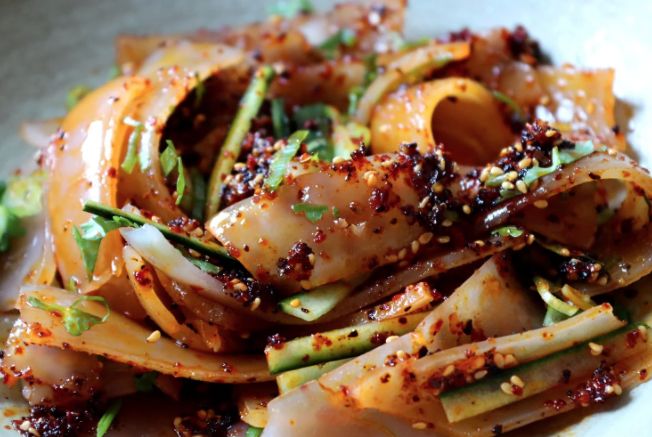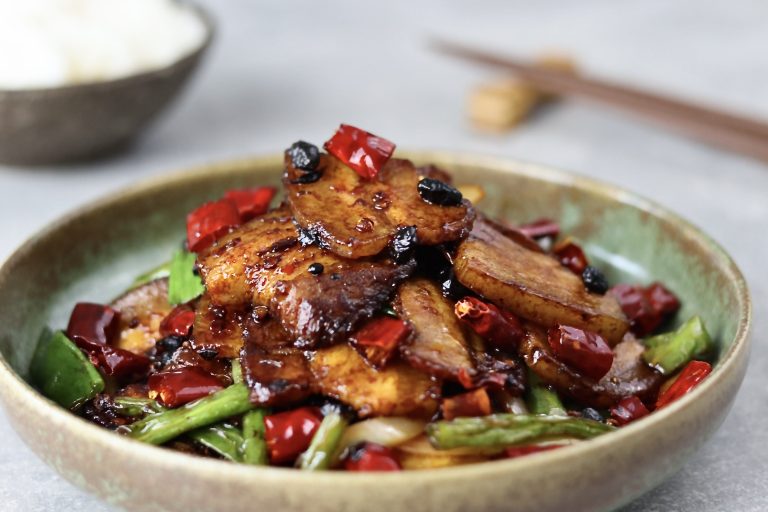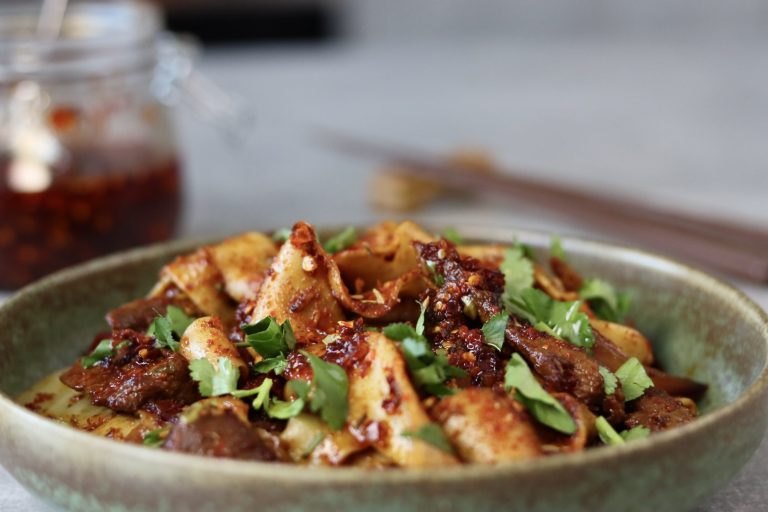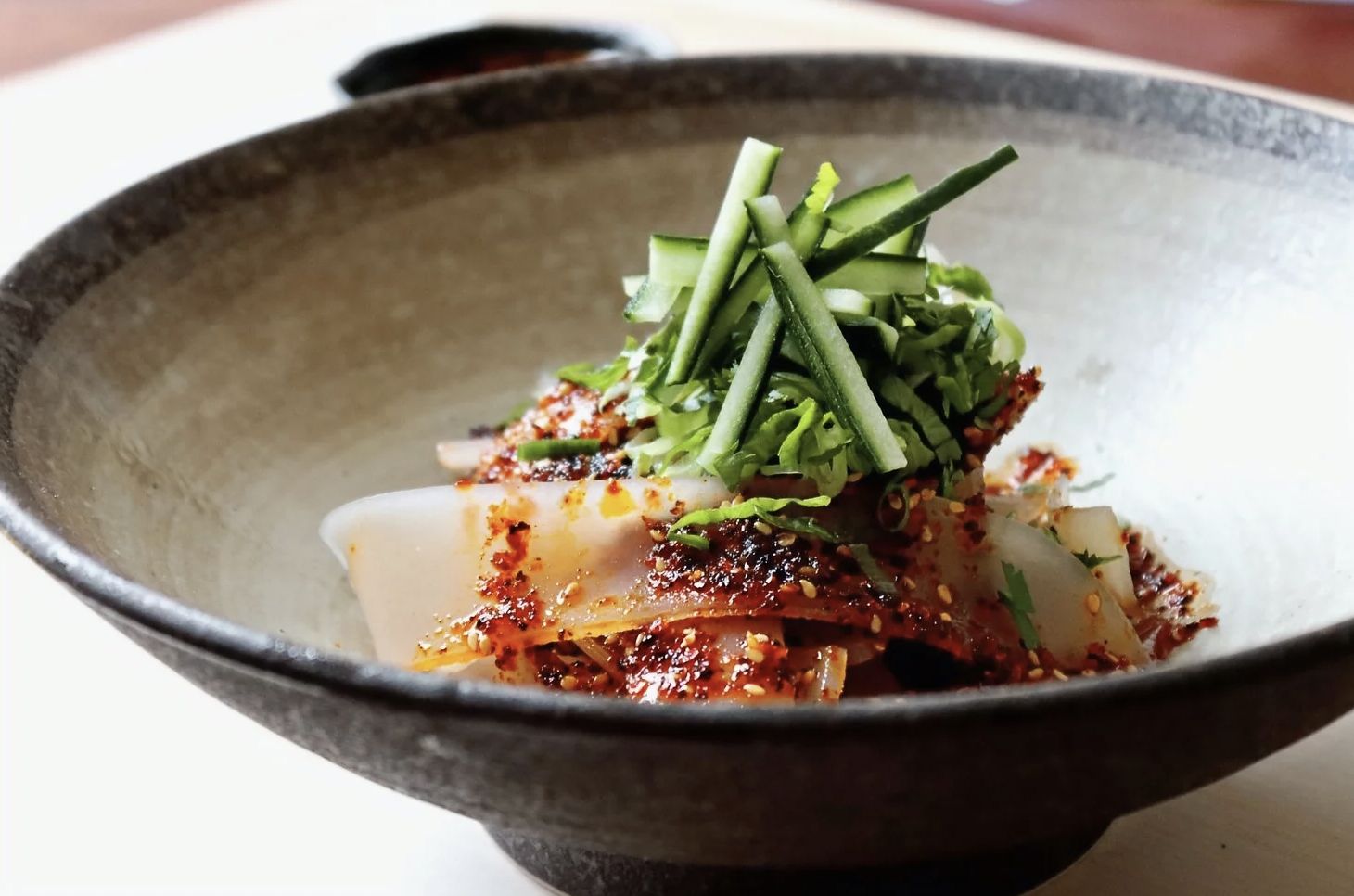
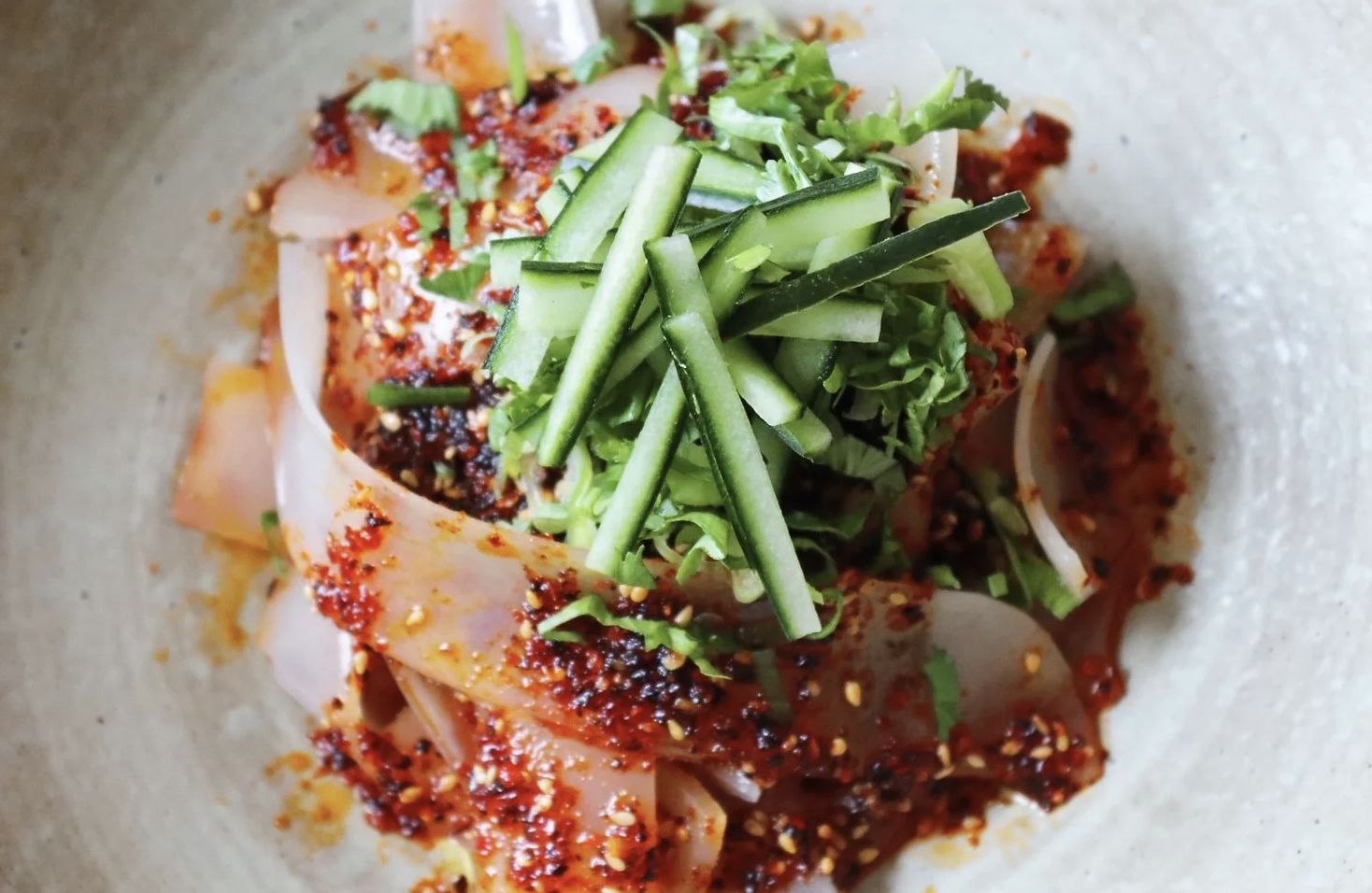
Intro:
Method:
Liangpi Noodles:
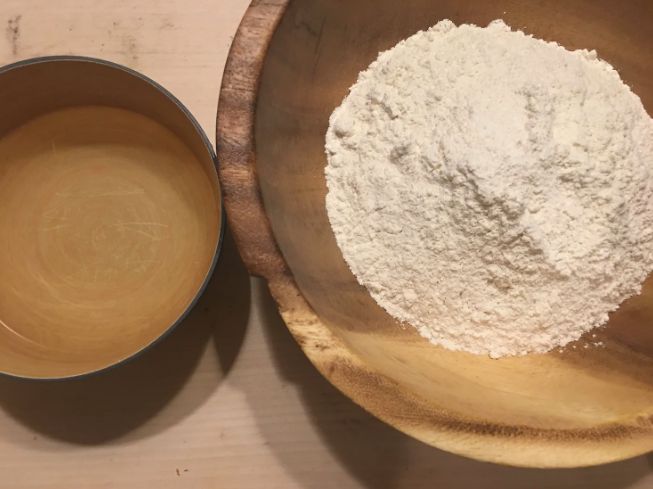
1. Let’s start off by making the liangpi noodles, best to do this either the morning or night before using them as they take a long time to rest. Begin by making a fairly standard noodle dough. In a large mixing bowl add 600g of plain flour, then in a separate jug measure and add 300ml of cold water and 1 tsp of salt. Whisk together until the salt has dissolved. Next create a well in the centre of the dough and slowly add the salt water in stages whilst constantly mixing. (I personally prefer using a pair of chopsticks to mix the flour). When all of the flour has been added we are looking for a crumble like constancy dough meaning the flour has been well hydrated. At this point begin to kneed together the dough by hand until a ball of dough is formed. Cover with clingfilm and allow the dough to rest for 30-45 minutes.
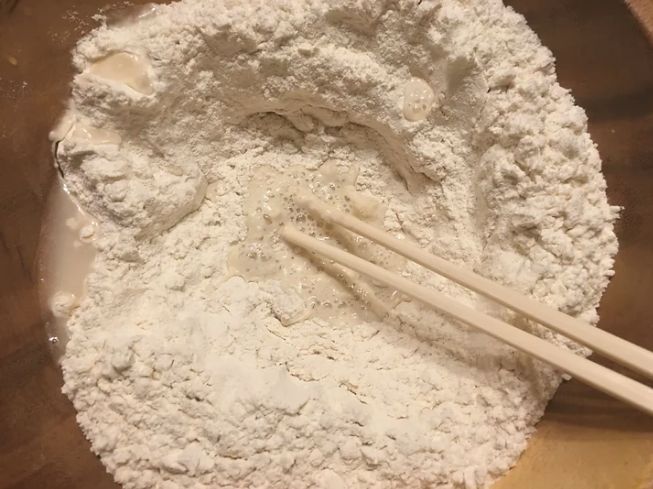
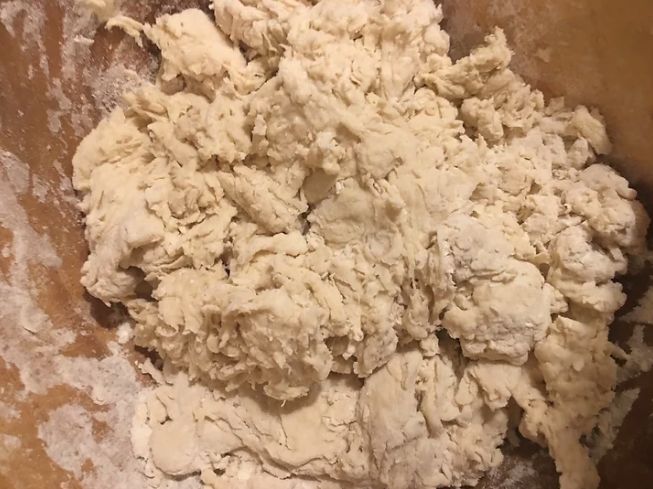
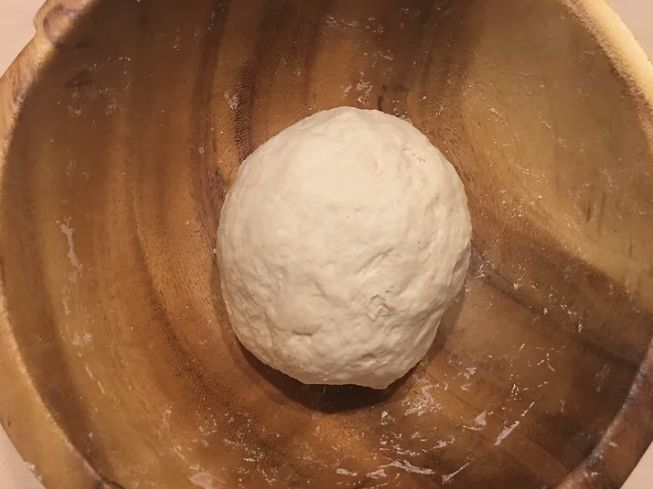
2. After the dough has rested this is now the point where things get a little more interesting. We now want to add approximately 1200ml of cold water to the dough. The exact measure of the water does not need to be super accurate as you will see why later. When added we now want to begin to wash the ball of dough by kneading in the water using our hands. What we are looking for is the water to become super milky as this is simply all of the starch being extracted from the gluten. Continue to wash the dough for approximately 15 minutes and what we are looking for is the initial dough to have become a piece of dough that is pure gluten. The dough should be stretchy, hard and almost split looking and our water should be super milky at this point.
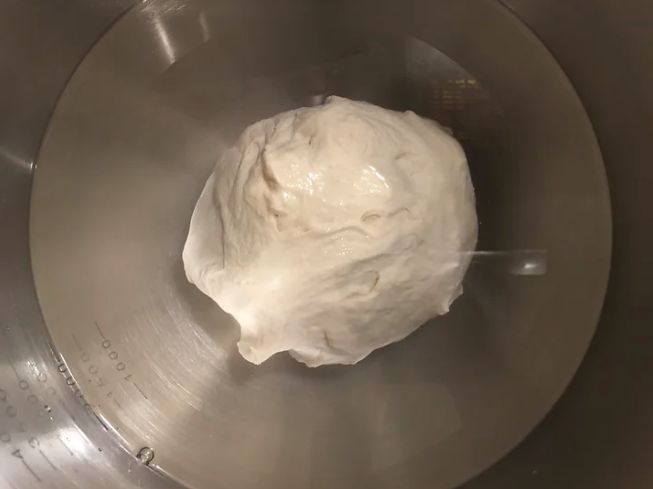
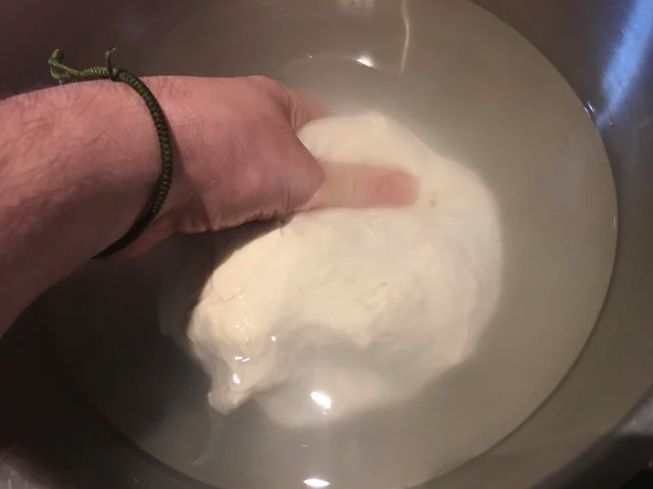
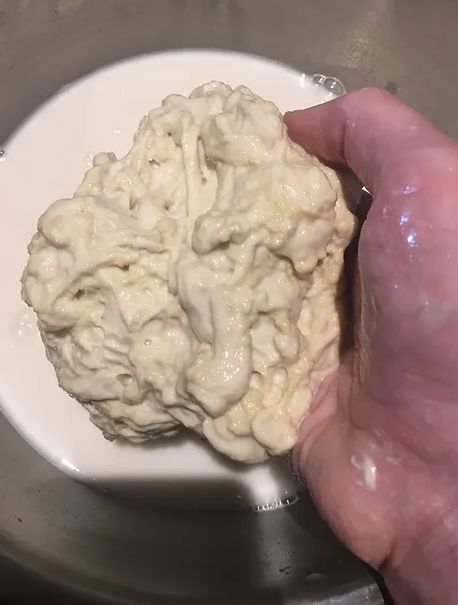
3. Now that we have extracted all the starch we want to now separate the dough of pure gluten from the starch. Remove of what remains of the gluten dough and place to one side. Traditionally the gluten dough is steamed until set then sliced into cubes to go with the dish. Feel free to do this but I skipped this stage in this recipe. As for the remaining starch water we want to pass through a fine sieve into a clear bowl. This stage is what will take up most of the time in this recipe. Cover the starch water with clingfilm and allow to rest for 4-5 hours. What we are looking for is the Starch to separate and fall to the bottom of the bowl as this is the starch concentrate that will make up the batter for steaming. This is the point at the recipe where you can quite simply walk away and come back to it later.
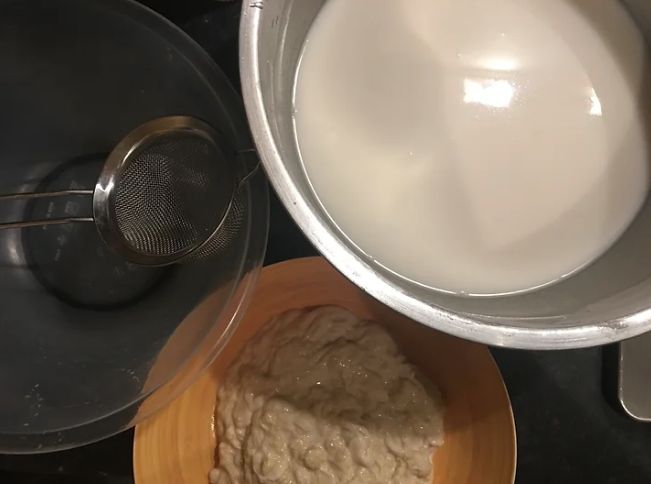
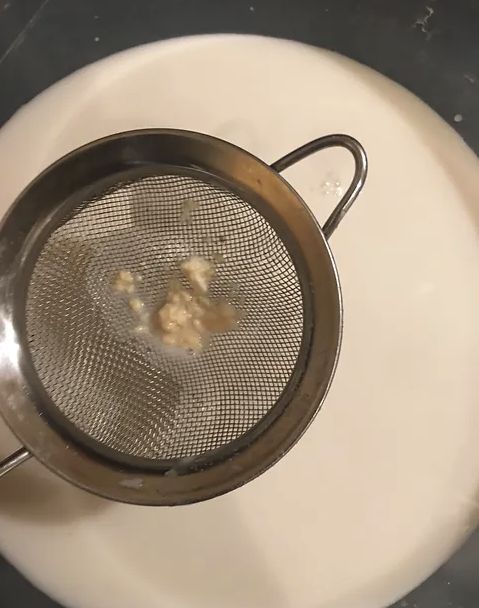
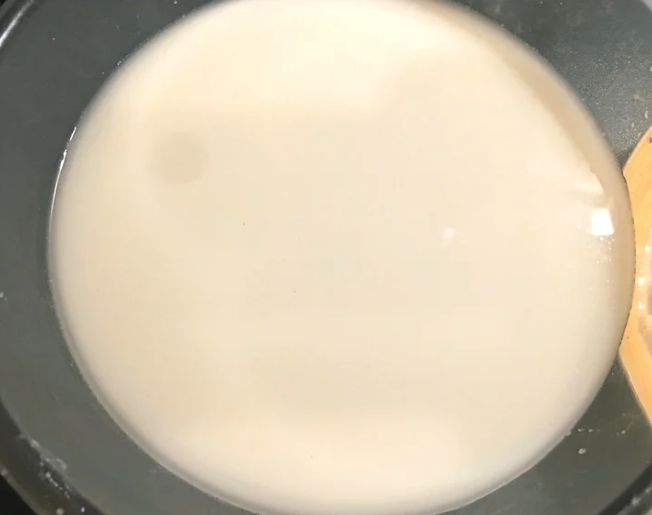
4-5 Hours later:
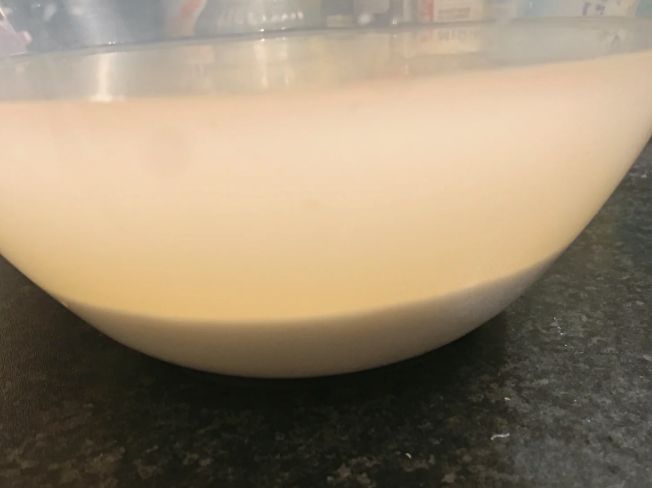
4. What we are looking for when the starch has rested is there to be a condensed layer of starch that has been able to sink to the bottom of the bowl (see image above). The next stage is crucial as we need to discard the top layer of water from the condensed starch by slowly pouring away the top half of water. Gently pour away the top layer then all that should be left is the thick starch at the bottom. At this point we want to transform the starch into more of a batter by mixing and breaking down with a spatula. We are looking for a consistency that is similar to almond milk, however, if too thick then add a touch of cold water until we get the correct consistency.
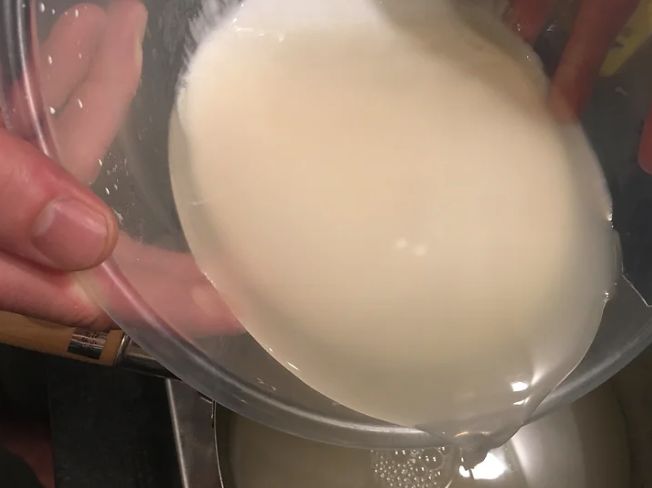
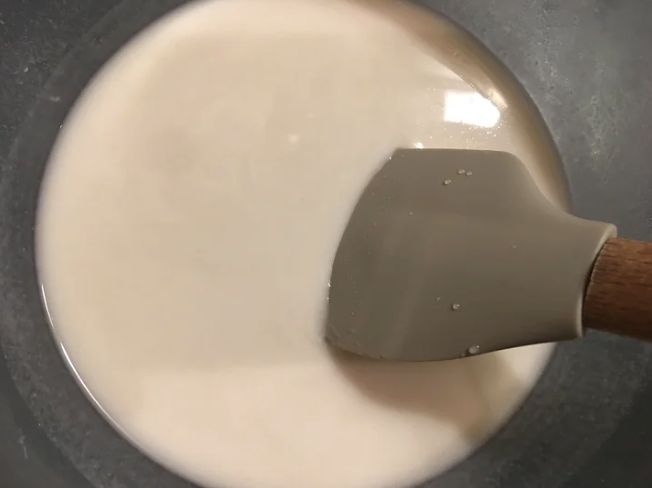
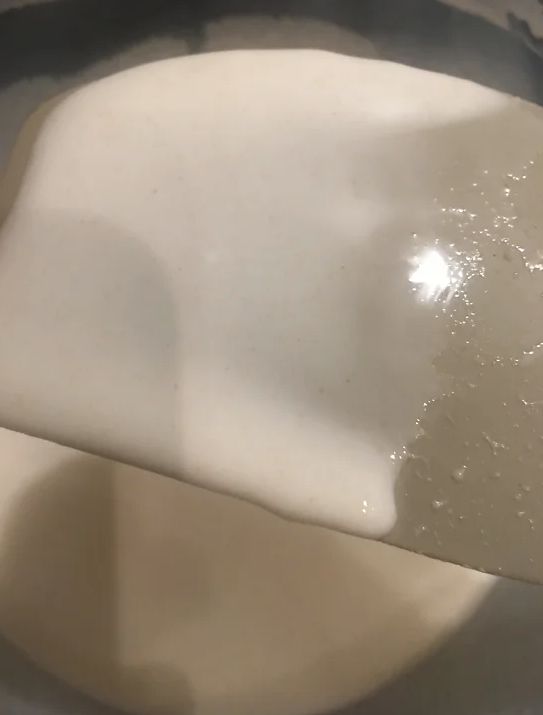
5. Now that we have our batter is time to steam to transform into the liangpi noodles. For steaming you will need to use a flat small baking tray that will be able to fit inside of a large enough pan with a lid. The baking tray I used was 15cm by 15cm. Now place a large pan onto a medium heat and add enough water to just cover 1/4 of the way high on the tin we will use to steam the batter. When the water reaches approximately 80°c lightly brush the tin with a touch of cooking oil then add just enough of the starch batter to cover the base of the tin (1 1/2 ladles approx). We now want to add the tin to the pan and cover with a lid. Literally steam until the liquid becomes translucent (60-90 seconds approx).
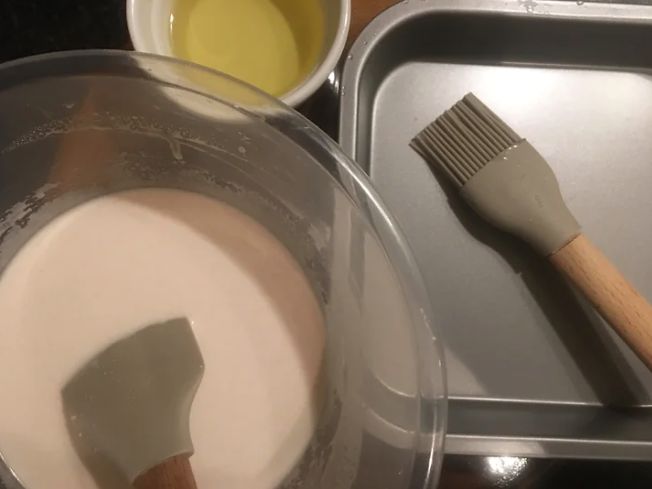
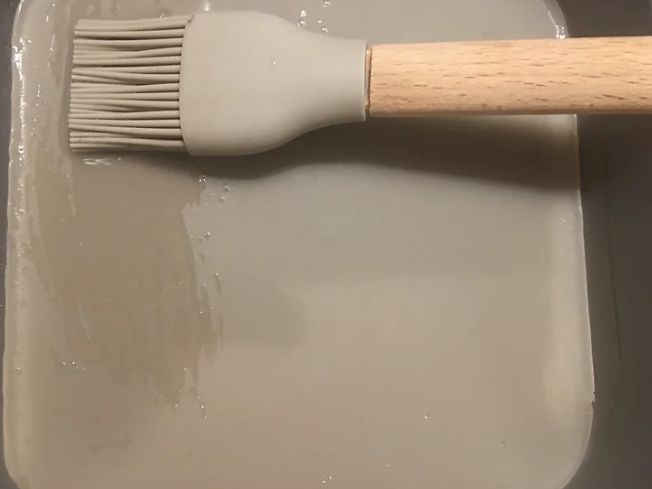
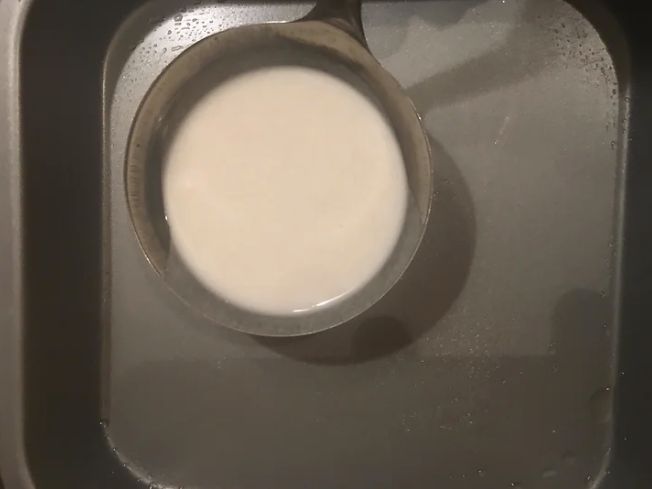

6. When the noodle batter has set and now translucent remove from the pan and allow to cool briefly. Brush again lightly with oil then use a spatula to carefully place the noodle sheet onto a tray. Repeat the process until all of the noodle batter is used. I was able to get 12 sheets from this mix, however anything around that will be just fine.
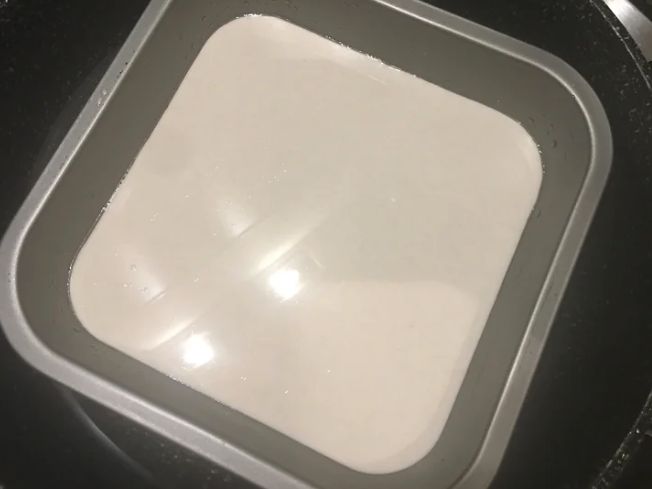

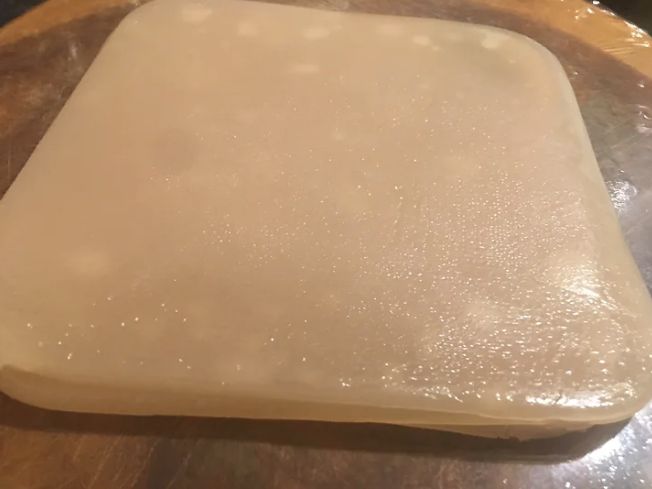
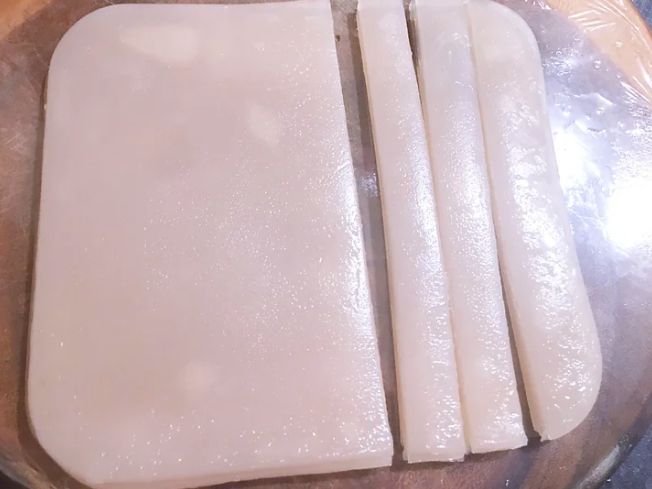
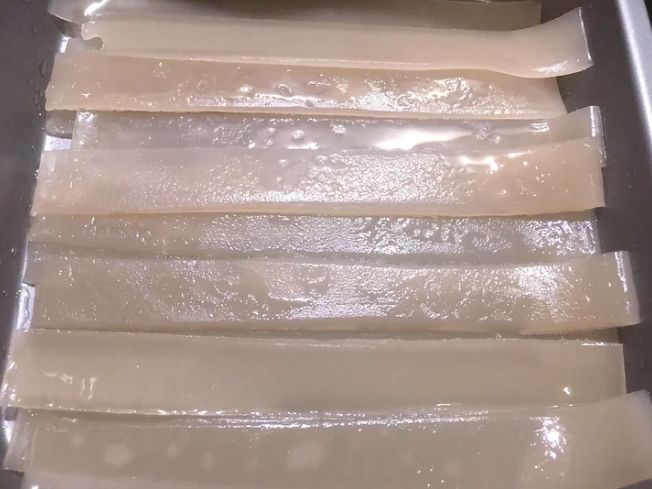
Chilli Oil:
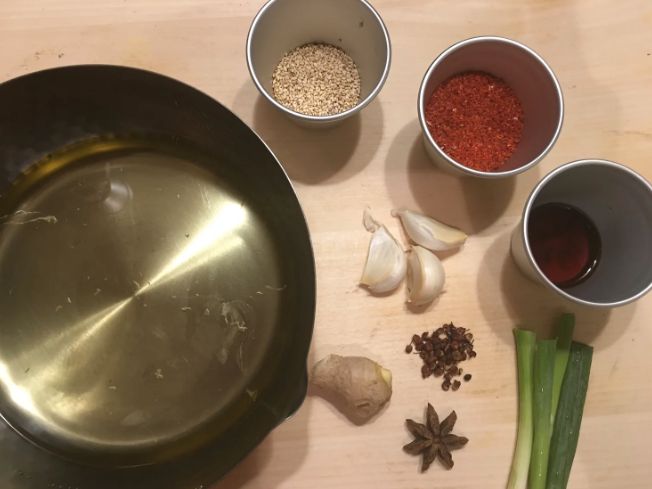
8. Now to make the chilli oil, this recipe is slightly more than what you would need for this recipe, however, store any left over in a jar and this will happily keep for a month or two. Begin by adding approximately 300ml of cooking oil into a small pan. To the oil add 1 spring onion cut into 2, 1 star anise and 1 tsp of Sichuan peppercorns. Place onto a medium heat and slowly begin to heat and infuse the oil. Whilst we are waiting on the oil to heat in a separate heat proof bowl add 1/2 cup fine chilli flakes, 1/4 cup of sesame seeds, 3 minced garlic cloves and 10g of finely minced ginger. Mix well and place the dried ingredients to one side for now.

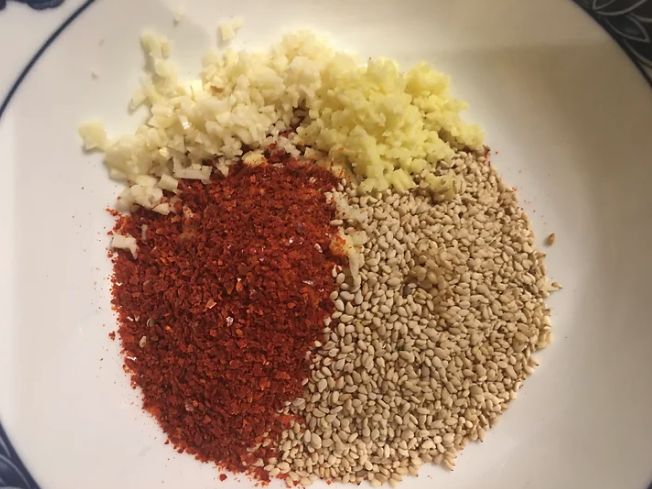
9. When the oil temperature increases and the aromats become golden brown carefully remove the spring onion, Sichuan peppercorns and star anise then turn the heat to high to allow the temperature of the oil to reach approximately 170°c. When the oil is ready carefully remove from the heat and pour over the dried ingredients. Next add 1 tbsp of black rice vinegar to the chilli oil taking care at this stage as it will spit a little. Season with a pinch of sugar and salt to finish and allow the chilli oil to cool.
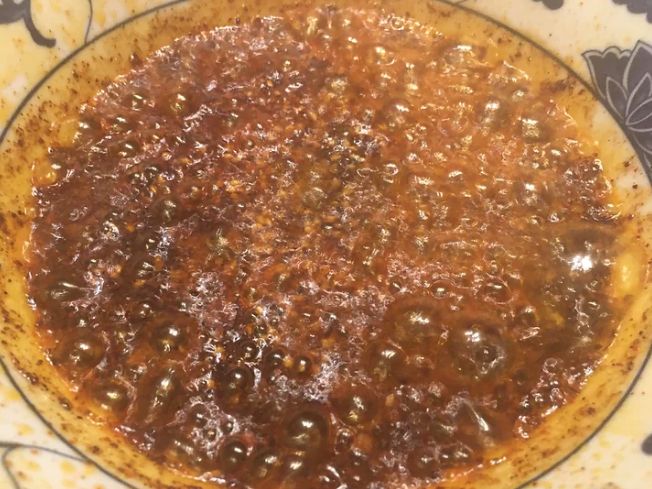
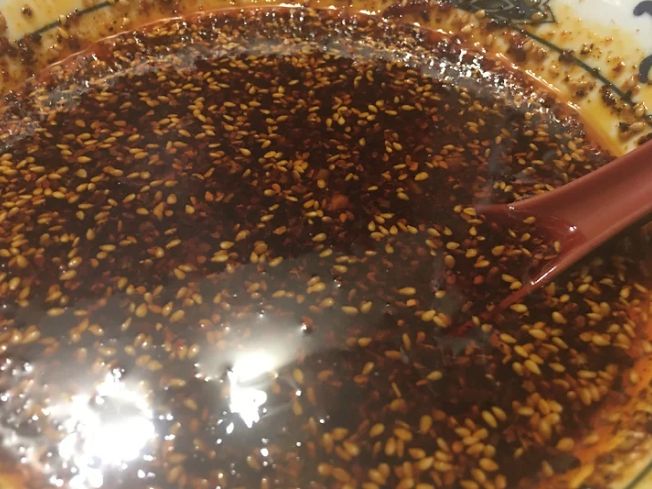
Vegetable Toppings:
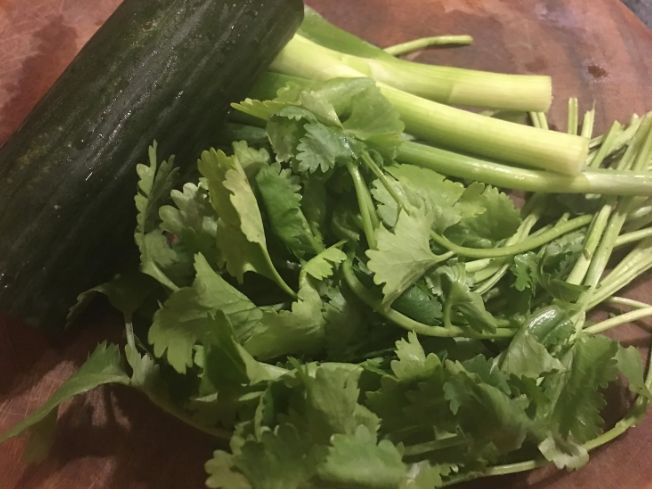
10. All that’s left to do now is to prepare a few raw toppings to help give the finished dish a little freshness. Simply finely slice a few spring onions, slice 1/2 cucumber into a fine julienne or just grate it and roughly chop 1/2 bunch of coriander. Place all the chopped toppings onto a tray and we are now ready to plate up.
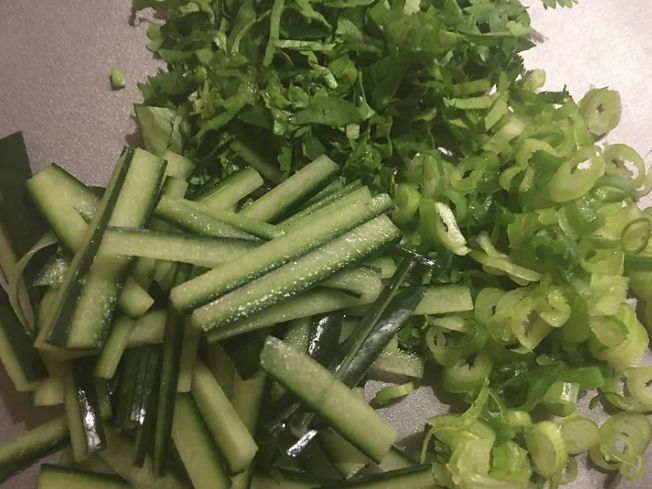
11. To serve, divide the liangpi noodles into bowls then add as many spoonfuls of chilli oil you can take of over the top. Finish with some coriander, spring onion and cucumbers then give everything a good mix and nourish! Hope you like this delicious, refreshing, unique noodle recipe!
